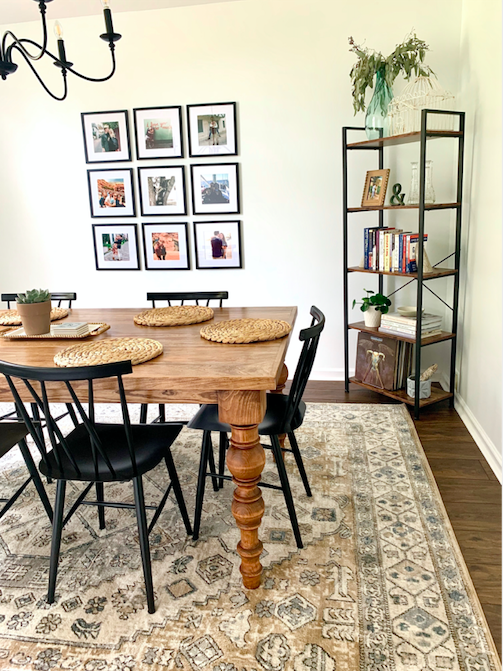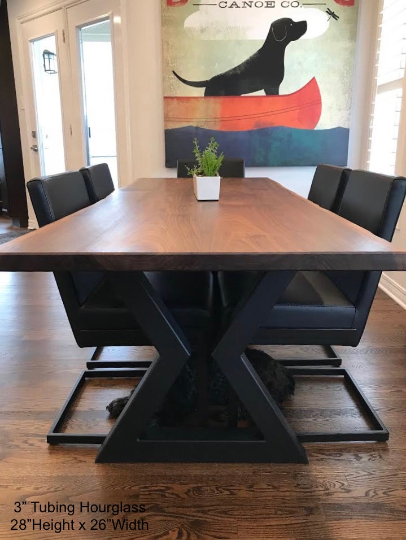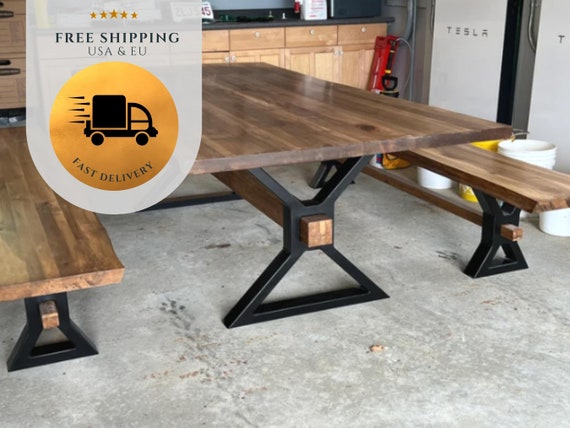Professional Tips for Setting Up Dining Room Table Legs for Optimum Security
When it comes to mounting dining space table legs, accomplishing maximum security is vital for both functionality and aesthetics. What certain techniques can improve security also better?
Pick the Right Legs
When choosing the ideal legs for your dining space table, it is important to think about both capability and aesthetics. The legs you pick will substantially influence the overall design and stability of the table. Assess the table's meant use; if you expect frequent gatherings, sturdier legs, such as those made from solid wood or metal, might be extra suitable, as they offer increased toughness and assistance.
Following, take into consideration the elevation and style of the legs in connection to the tabletop. Conventional table normally vary from 28 to 30 inches in height, so guarantee the legs line up with this standard for comfort. The design of the legs must complement the style of the table top-- whether it be modern-day, rustic, or traditional. For circumstances, conical legs can include a modern touch, while turned legs may communicate a much more timeless aesthetic.

Select Appropriate Equipment
How can the appropriate hardware improve the stability and longevity of your dining area table? The choice of appropriate hardware is critical to making sure that the legs of your table are firmly attached and able to stand up to normal usage. Premium screws, screws, and braces provide the required stamina to sustain the weight of the table, along with any extra tons put upon it throughout dishes or celebrations.
When selecting screws, choose those made from sturdy products such as stainless steel or brass, which resist corrosion and preserve stability gradually. The size of the screws is just as important; they should penetrate deeply into the table's structure without compromising stability. For bolted connections, think about utilizing lock washers to stop loosening because of vibration or motion.
Furthermore, using corner braces can include additional assistance, particularly for larger tables or those with larger tops. These braces distribute weight uniformly and help keep the table's form. Guaranteeing that the equipment you choose is ideal for the certain materials of your table will better improve its overall security and durability, enabling you to enjoy your eating experience for many years to find.
Ensure Proper Placement
Correct alignment of eating area table legs is vital for both visual charm and useful stability. To accomplish optimal alignment, start by determining the distance from the table's corners to the leg attachment points.
Utilize a level during setup to validate that each leg is perpendicular to the tabletop. This step is critical, as even minor disparities can escalate into considerable security concerns with time. It is advisable to mark the desired leg settings on the bottom of the table with a pencil or masking tape before securing them. This technique serves as an aesthetic overview, permitting changes as required.
Furthermore, double-check the alignment after the initial screws are tightened up, as changes might be essential prior to totally safeguarding the equipment. By focusing on appropriate positioning, you not only enhance the table's overall design but additionally ensure that it remains useful and steady for several years to find.

Think About Weight Distribution
After guaranteeing proper positioning of the dining area table legs, it is essential to think about weight distribution to boost stability and functionality. dining room table legs. Correct weight distribution is critical in stopping wobbling and making sure that the table can sustain its intended tons without risk of tipping or falling down
When positioning the legs, guarantee they are placed at equivalent distances from the facility of the table to evenly disperse the weight across the framework. Consider the a fantastic read weight of the table top and any products that will frequently relax on it, such as decorative items or tabletop appliances. Tables with much heavier surface areas must ideally have legs located closer to the edges, as this makes best use of the base of support and decreases the danger of instability.
In addition, if the table is meant for usage in a high-traffic area, think about making use of heavier products for the legs or including stabilizing aspects, such as cross-bracing or a reduced rack - dining room table legs. These adjustments can assist preserve balance and protect against moving throughout use. Ultimately, a well-considered weight circulation method will considerably improve the go to website table's total efficiency, guaranteeing it remains a eye-catching and useful focal point for your dining space
Test Stability Before Use
Testing the security of the eating area table prior to use is a critical action that ought to not be neglected. If the table shows instability, recognize the legs or joints that might need adjustment.
Following, examine that all bolts and screws are tightened up appropriately. Loose connections can cause instability and possible damage over time. If essential, utilize wood adhesive on joints to improve stability, ensuring to permit appropriate drying time.

Final Thought
In conclusion, the setup of dining-room table legs calls for careful consideration of products, weight, placement, and hardware distribution to accomplish optimum stability. By choosing tough legs and premium bolts, ensuring accurate positioning, and dispersing weight equally, the architectural honesty of the table can be significantly improved. Carrying out a stability test before routine usage additionally ensures that the table will withstand everyday pressures, thereby offering a trustworthy and secure eating experience.
When it comes to mounting eating space table legs, accomplishing maximum stability is critical for both functionality and looks. The legs my latest blog post you select will substantially affect the overall design and security of the table (dining room table legs). Typical eating tables normally vary from 28 to 30 inches in height, so guarantee the legs align with this criterion for convenience.Appropriate alignment of dining area table legs is necessary for both visual appeal and functional security.In final thought, the installation of eating space table legs needs careful factor to consider of materials, hardware, weight, and alignment distribution to accomplish maximum stability